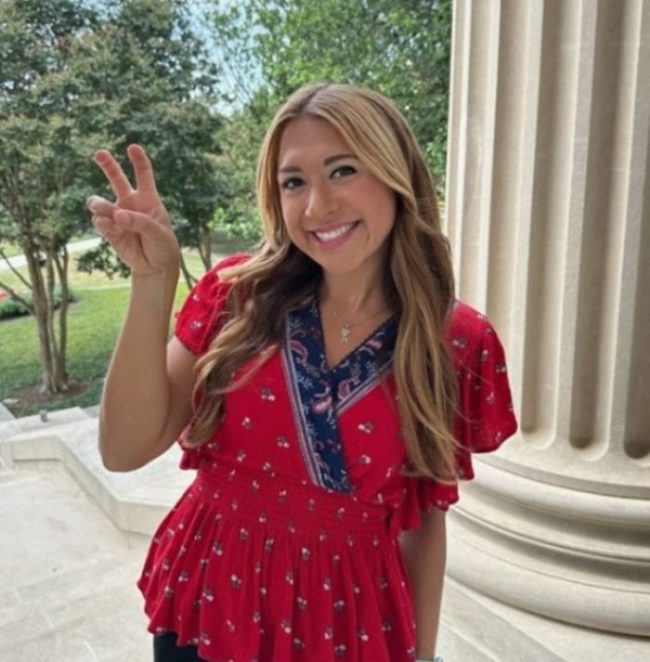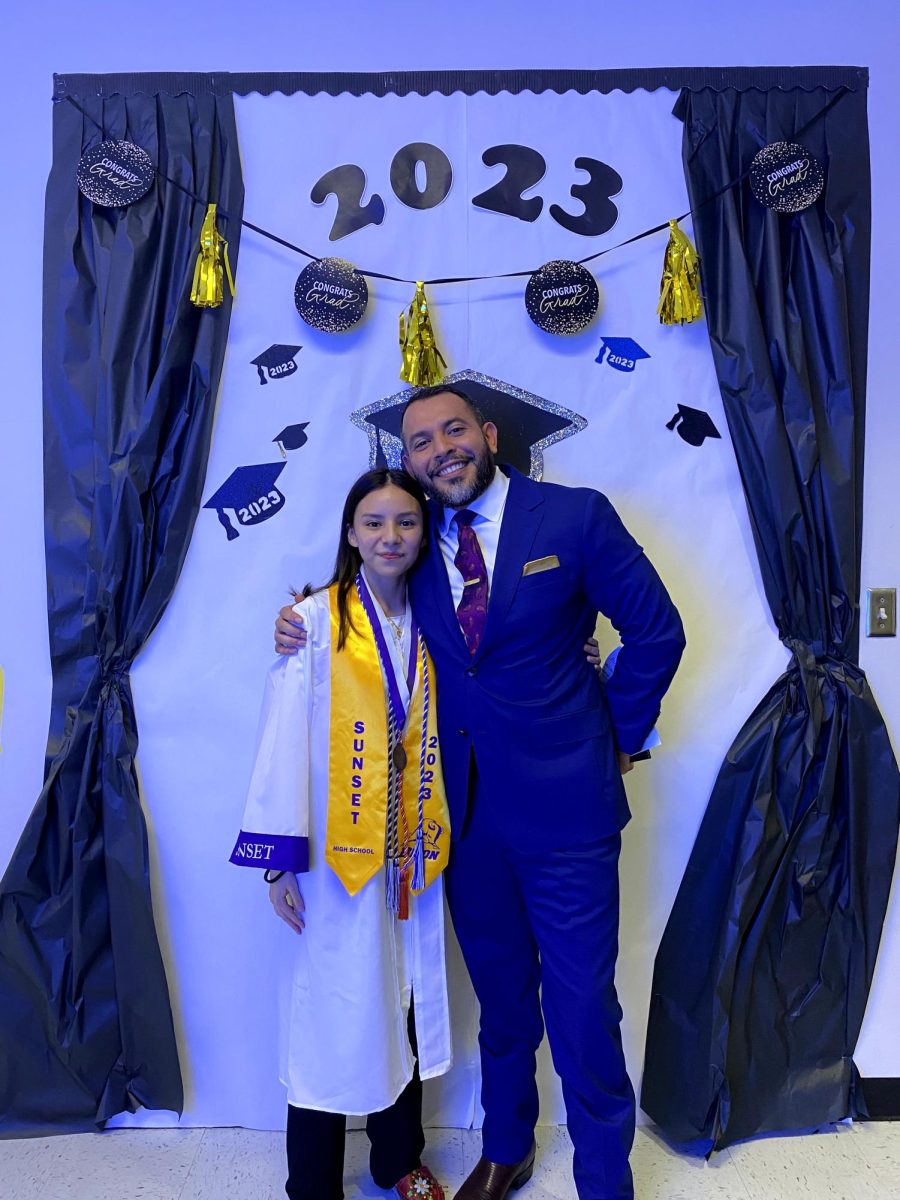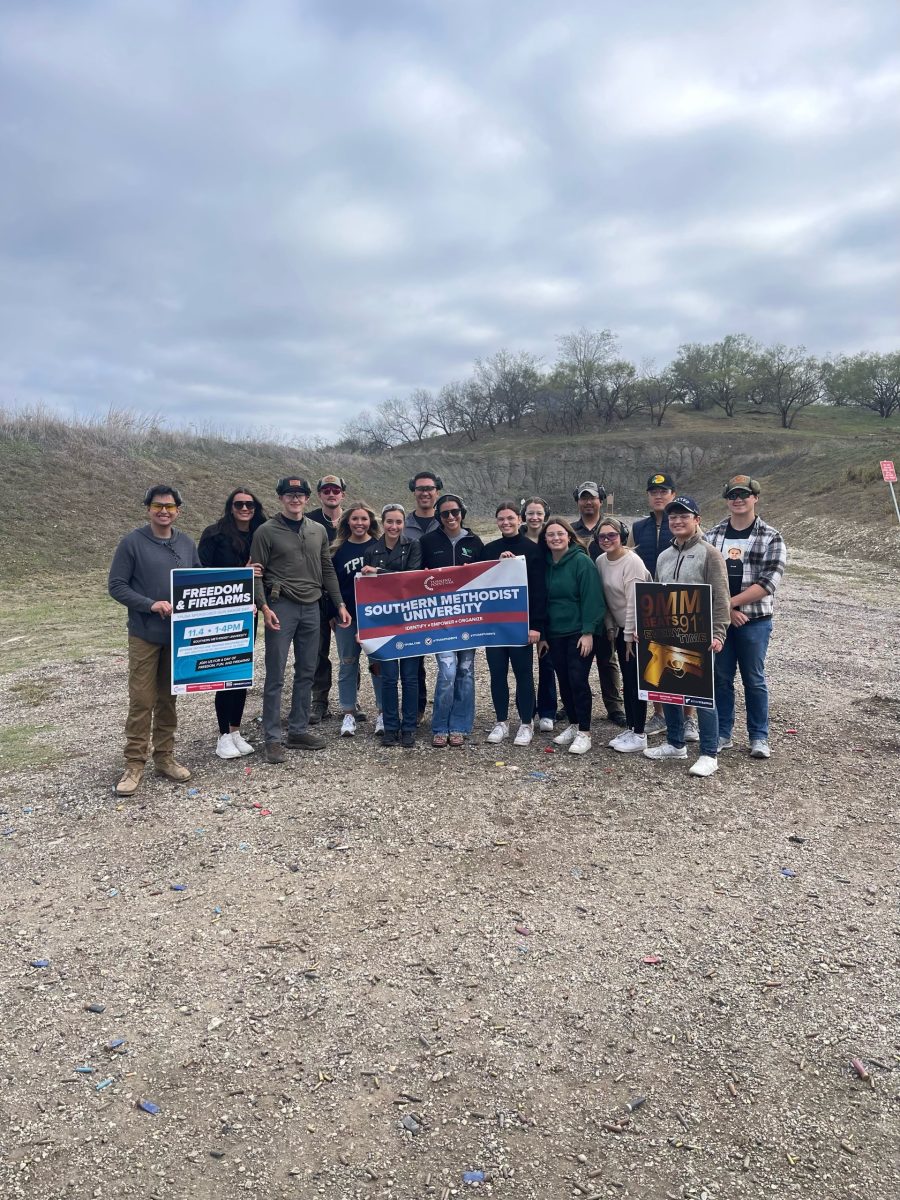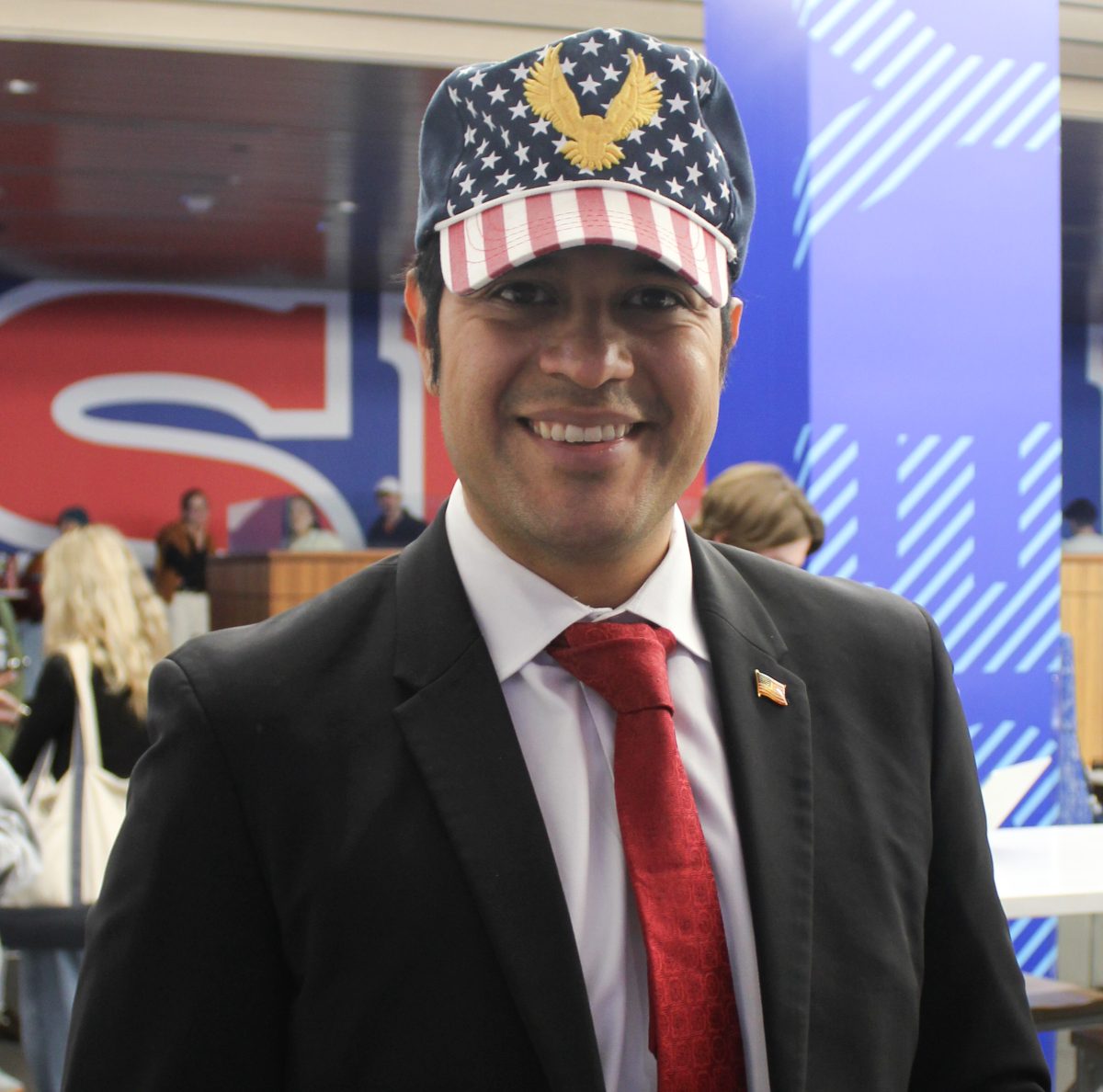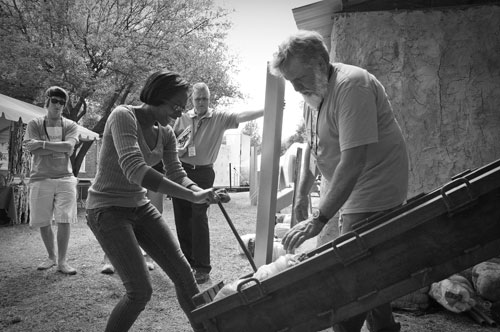
SMU engineering student Courtney Kelley, left, compresses recycled plastic into an Ubuntu Blox as Ubuntu Blox inventor Harvey Lacey oversees Kelley’s work Thursday afternoon in the Hunt Institute’s Living Village. (TAYLOR HENRY/The Daily Campus)
The brightly colored T-shirts seen all over campus this week proclaim the theme of the Hunt Institute’s Engineering and Humanities Week: “Changing the conversation to action.”
But inventor Harvey Lacey is putting this into practice.
The Wylie, Texas resident remembers the exact day he came up with his interpretation of sustainable housing.
“It was November 18, 2010,” Lacey said. “I woke up out of a sound sleep and it was like the picture in my head just got clear.”
A couple of weeks earlier Lacey had attended a lecture on holistic housing given by Ronald Omyonga held at SMU. Omyonga is the Kenyan architect who designed the HabiHut, a structure displayed at the Living Village with Lacey’s Ubuntu Blox house.
“He said there are all these informally trained voices with outrageous schemes that have validity,'” Lacey said. “It was like he was saying ‘I believe in you.’ I mean I don’t even have a high school diploma, but I have ideas.”
And the Ubuntu Blox house was born.
Lacey’s house is a low-cost sustainable model that is made using bales of recycled plastic as the bricks and yellow clay as the plaster.
“What we do is teach them to use what they have at home,” Lacey said. “I don’t have to give it to them. I have to show them they have the raw materials there.”
Lacey also created and built the machine used to compress the plastic trash into the blocks. It was designed so that people of both genders and all sizes could operate the machine.
“Ubuntu,” the name of the house, is an African word that refers to a humanist philosophy focusing on caring, sharing and being in harmony with all of creation.
“Ubuntu Blox. It screams what we’re about,” Lacey said.
Lacey hopes that he can take this experience beyond SMU’s campus.
Lacey has worked to create a partnership between SMU Lyle engineering students and students at Wylie High School. He would like to see a mutually beneficial relationship develop between the two.
He says that taking the knowledge he has gained at Engineering and Humanities Week and expanding it is what everything he had worked for is all about.
“Why can’t we make change?” Lacey said. “Why can’t we make it different?”





